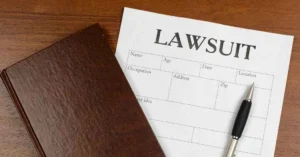John Deere and Caterpillar are well-known companies that make agricultural and construction machines. What will happen if these two companies go to court? Who will win between John Deere and Caterpillar? The answer depends on the situation.
Each company has significantly added to big machinery, even though patents are a problem. Because of this, the fight between these big companies could impact the industry.
Visit our Am Badar & Am Badar’s insights page to find out more about foreign patent cases and other matters involving intellectual property.
A Brief History of John Deere and Caterpillar
Here are some facts about both companies that will help you understand the John Deere vs Caterpillar case better:
John Deere’s Legacy
John Deere’s adventure started in 1837 with an essential yet innovative plow that changed agriculture. John Deere was known for its inventiveness, expanding from plows to innovative agricultural gear while constantly changing to suit current needs.
Today, the firm produces agricultural equipment, forestry gear, and construction tools, expanding its reach across other sectors. Because of the founder’s dedication to quality and durability, the company became a well-known name in heavy and farming equipment.
Caterpillar’s Rise
On the other hand, Caterpillar began making machines almost a century after John Deere. They were known for making strong equipment for construction and mining. Its bright yellow tools are used on many construction sites around the world.
As one of the leading manufacturers, they are known for making high-performance equipment that meets the needs of industry users worldwide.
Understanding Patent Law in Heavy Machinery
To understand the John Deere vs Caterpillar case, you must first know how patent law works in the building industry, especially regarding heavy equipment.
In heavy machinery, patents are often used to protect ideas about the shape and worth of tools, methods, and small parts. Firms need this kind of safety because it gives them a short time to keep their ideas safe, giving them an edge in the market.
Common Patent Issues in the Industry
Patent conflicts often occur when businesses in this field claim that competitors are stealing their ideas or technology. These problems are often caused by complicated machine parts or methods, such as new ways to make things, unique tools, or extra safety measures.
Patents covering how machines are assembled, the software that runs them, or parts of their structure that make them safer and last longer could all cause debate.
How hard it is to show copyright theft is a big problem in the business world. If a company wants to prove patent infringements, it must show that a competitor’s product has parts protected by their patents.
If the patent violation is proven, the company that was harmed can demand payment to make up for lost profits and tell the rival not to make or sell the items that violate the patent.
Key Developments in the John Deere-Caterpillar Patent Battle
Now that you understand all the fundamentals, let’s examine the John Deere vs. Caterpillar case more deeply. As you know, both companies are huge and have been around for a long time.
Many charges and defenses in this case led to difficult court decisions that greatly affected the companies involved and the business.
Major Lawsuits and Claims
The legal battle between John Deere vs Caterpillar began in 2017, when Wirtgen America, a subsidiary of John Deere, filed a lawsuit against Caterpillar in the United States District Court in Delaware.
Wirtgen claimed Caterpillar’s road-milling equipment violated patents relating to “cold milling” technology, a critical procedure for repairing road surfaces.
Wirtgen claimed that Caterpillar’s road construction gear violated its patents, which include specialized equipment and techniques for milling and repaving roads.
In response, Caterpillar claimed that Wirtgen’s road-milling equipment infringed on three trademarks. As a result, both corporations filed several claims and countersuits.
Wirtgen also sued Caterpillar for unauthorized use of its confidential technologies. Wirtgen accused Caterpillar of acquiring and disassembling Wirtgen machines, studying their proprietary systems, and putting these components into Caterpillar’s new models.
Denying the allegations, Caterpillar said that independent designs used in their manufacturing did not violate Wirtgen’s rights.
Furthermore, Caterpillar claimed Wirtgen’s patents were invalid or did not cover its technologies. This made the case challenging, and the court had to choose between many rights and legal grounds.
Legal Outcomes
The court case between John Deere and Caterpillar, which took place in Delaware, was finally over in February 2024.
After reviewing the data and hearing from experts, the judges decided that Caterpillar had broken five of Wirtgen’s patents. Therefore, the judges gave Wirtgen $12.9 million in penalties. That’s a lot of money, showing how bad Caterpillar was.
Furthermore, the court decided that Caterpillar’s infringement was deliberate, forcing U.S. District Judge Joshua Wolson to increase the original damages by $6.5 million, bringing the total to roughly $19.4 million.
In addition to the pecuniary consequences, Judge Wolson permanently prohibited selling Caterpillar’s infringing equipment.
Furthermore, in a similar dispute before the US International Trade Commission (ITC), Wirtgen successfully asserted that Caterpillar’s equipment violated US trade regulations.
After that, the ITC prohibited some types of Caterpillar road milling from entering the United States in 2019. However, the company was finally allowed to sell its upgraded models in the country starting in 2021.
The Impact on the Industry
The well-known patent fight between John Deere and Caterpillar affected the heavy machine business.
The case reminded companies in this sector of the potential operational and financial risks related to intellectual property violations. Moreover, it has changed the way makers of building and road-milling tools handle R&D approaches and patent applications.
Given that the court sided with Wirtgen, other companies working in the same area are probably less likely to adopt or copy rival innovations.
Consequences for John Deere and Caterpillar
The win for John Deere and Wirtgen kept them ahead in the market and sent a solid message to competitors about the importance of developing new ideas and protecting rights.
Conversely, Caterpillar faced substantial financial and operational setbacks due to the lawsuit, emphasizing the strategic importance of securing and respecting IP rights.
Understanding and maintaining intellectual property rights is critical for heavy machinery manufacturers. Am Badar & Am Badar provides a Patent Prosecution Service to assist you protect your ideas and preserve a competitive advantage.
Learn more about how we can help you protect your intellectual property rights in Indonesia and worldwide by looking at our complete list of services. Also, please contact us if you have any questions.
Read our post, “The Importance of Utility Patents for Inventors” to learn more about how to protect intellectual property. You might find more articles on our insights page about well-known court cases like the John Deere vs Caterpillar case.






